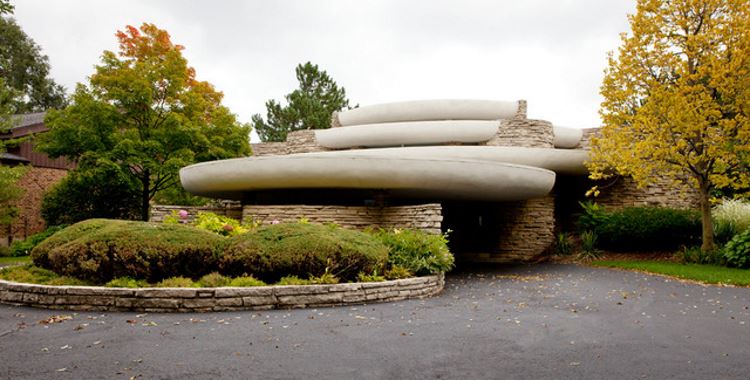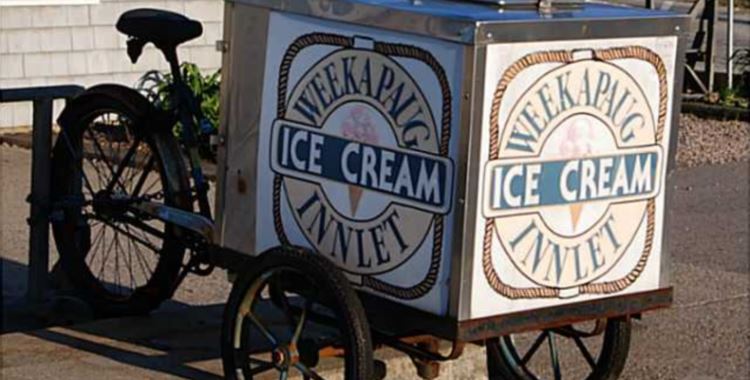From the Wall Street Journal’s House of the Day:
Philanthropist Frederick Forrest Peabody built this neoclassical home in Santa Barbara, Calif., in 1914. The current owners, Sandi and Bill Nicholson, bought it in 1998. Mr. Nicholson is the former chief operating officer of Amway, which manufactures and markets consumer products. ‘It really needed to be restored,’ Mr. Nicholson says. ‘We were happy to save a wonderful hilltop home.’
…
The terraced rose garden includes 500 rosebushes. Mrs. Nicholson says there are peach tones, yellow tones and a ‘hot cocoa’ rose with a terra cotta tone. The garden also includes approximately 200 fruit trees, including lemon, lime, orange, pomegranate and apple. There are 16 varieties of banana trees. Joyce Rey of Coldwell Banker Previews International and Harry Kolb of Sotheby’s International Realty share the listing. The house was first listed in September 2013 with an asking price of $57.5 million. The price was lowered to $49 million in December 2013.
Here’s the comment Emerald63 included in the submission:
Really, where else are you going to find all that plus 23,000sq ft for only $49 million? (Down “significantly” from $57.5 million.)
Not indicated: how many full-time gardeners it takes to maintain such a massive botanical bounty.
I also like the giant winged lions on the left side of the front yard. Can I just have those? They definitely require a lot less maintenance.







I’m thinking when you’ve got a $49M house, paying a few gardeners, even full time, is not gonna be a problem. What I would never have guessed is… there are 16 varieties of bananas?! (O_o) That, the 500 rosebushes (regardless of color), and a pond big enough to keep 30 turtles happy is definitely something else. The kicker? This place sold for “only” $1.75M at public auction in 1997. That’s a whopping 28-fold increase in value, almost 33-fold if you work from the original asking price. I imagine Mr. Amway’s multitude of minions never fared as well. At least now we know how the 1% live. Thanks for finding it on Redfin, Marty, otherwise I would never have known about the 1997 price tag.
It’s well worth looking at both links. Redfin has way more photos, but the WSJ feature includes all sorts of tidbits, like the fact that the bedroom wallpaper, found in Belgium, originated in 1820s China and was hand-painted in France. Because these things matter. Really, I’m just happy that someone finally understood the elegance, yet understated restraint, of Doric columns.
Boy, talk about crushing the dream – this place must employ a cast of hundreds (OK, dozens) to look after it. Maybe instead of a caretaker they might need a garden-variety hermit to wander around in costume and live in an improved gazebo? I could probably handle that, as long as there was good signal.
@anodean: The key to being a good servant is for your employer not realize they have servants at all as much of the time as possible. A quality servant knows his/her employer well enough to anticipate their needs and desires a high percentage of the time, while themselves blending seamlessly into the background. That’s not to say servants should be ignored; they should be treated with civility and respect for their valuable service, as well as generously compensated for doing those things employers don’t have the time, or inclination, to do themselves. It can be a mutually beneficial relationship, as long as everyone is OK with their role and treatment.
I was on the receiving end of such quality care in a nice restaurant in Milan many years ago. It was quite the experience. It seems being a waiter in Italy can be considered a career, not just a job, and career wait staff take enormous pride in properly attending to their clientele’s needs. I was all the more stunned and horrified sometime afterward when wait-staff in the US began to actually sit down at the table with the diners to take their order. Trust me, every time this happens I notify management that it invades my personal space and is not appropriate. Unfortunately, the “folksy staff” approach has begun to trump clientele being the center of attention in many establishments. One of many developments not to be applauded.
I suppose, though, if these home owners liked the idea of having a resident hermit, complete with garb and hermit-ish idiosyncrasies, it’s entirely up to them. Could be fun. Although… I do have doubts about the possibility of being a good hermit while also being jacked-in. But then, obviously, I’m a purist about some things. So let me know how that works out for ya, ‘kay? ;)
@Emerald63: I agree – the graceful treatment and appreciation of servants seems to be a uniquely European phenomenon of vanishing old manners grown from living in community.
In the US, there seems to be an underlying tension often perceived as meanness or arrogance in the served, but that I suspect is an artifact of our cultural worship of individual independence: deep down inside, the served feels demeaned by the experience and thus compelled either to prove that they could do the task better themselves or to deny that the task has any intrinsic value worthy of their attention. Flip side, artificial familiarity by the server offers the loophole that it’s OK if you accept “help” from friends or family. I’ve never worked out how many generations of money it takes to turn the US attitude to the European. ;)